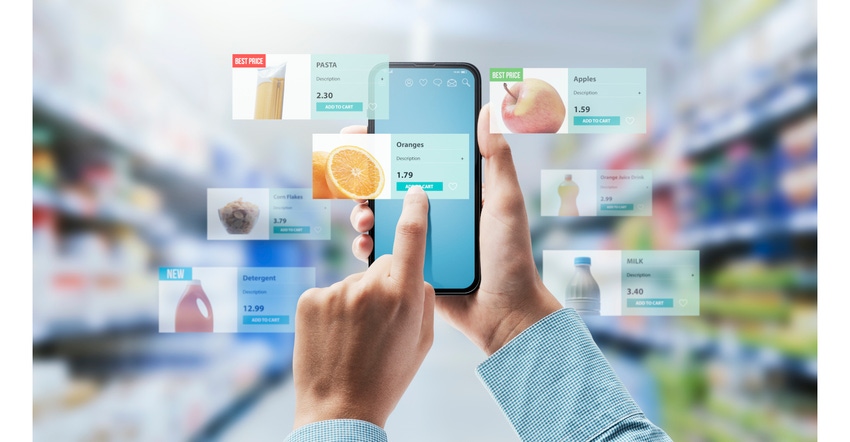2024 Top Food Trends to Watch
Minimally processed, protein-fueled, sustainably produced foods top the 2024 industry trends.

Food trends are always consumer-driven. 2024 is no different, with sustainability, shifting eating patterns, and new trends topping the list.
Consumers will become more aware of different levels of food processing in 2024 from media reports, regulations, and voluntary on-pack labels with ratings from sources such as NOVA or Siga, according to Mintel’s 2024 Global Food and Drink Trends report. This will encourage consumers to consider processing levels when choosing food and drink and reconsider how frequently they consume processed food and beverages.
“Many types of processed foods and processing techniques are valued by consumers on positive grounds linked to attributes like tradition, health, and naturalness,” says Megan Stanton, associate director, Mintel Food & Drink.
The report states that scrutiny of processing use in the food and beverage industry is intensifying and fueled by discussions about highly, overly, or ultra-processed food (UPF). Feelings about processed foods inspire consumers to look more closely at ingredients, nutrition, and production methods. Mintel reports that the term “ultra-processing” is the latest evolution of terms such as “junk food” or “clean label.”
While “all things in moderation” is a saying sometimes associated with highly processed products, there is growth potential for minimally processed food and drinks that focus on the positive aspects of food processing techniques, such as those that enhance nutrition, inhibit contaminant formation, or improve sustainability.
According to Mintel’s research, brands offering minimally processed products should share how processing improves their products. Plus, front-of-pack labelling indicating high fat, sugar, and salt (HFSS) content doesn’t necessarily mean consumers will abandon specific foods such as salty snacks, biscuits, and confectionery.
While there will be opportunities for some ultra-processed food and drink brands to develop less processed versions of their products, most consumers will continue to use moderation or make occasional exceptions in their diets for their favorite ultra-processed food and drinks.
Minimally processed products that contain higher nutritional value and are easy to use will likely attract more consumers, according to Mintel. In addition, ongoing concerns about energy costs will lead consumers and retailers to increase their support for long-life, shelf-stable products that reduce the need for refrigeration or freezing.
Healthy Aging
Members of Generation X, who are currently in their mid-40s-to-late 50s, are pioneering a new approach to healthy aging that includes products that will help them thrive now and for decades to come. Moreover, says Mintel, Gen X is leading conversations around aging concerns that were once considered taboo. While brands need to understand and focus on the needs of Millennials (born between around 1980 and 1994) and the increasingly powerful Generation Z (born between around 1995 and 2012), it’s also crucial that they focus on the evolving needs of all consumers aged 40 and over, who account for the largest share of food and drinks spending in many markets around the world.
Over the next 12 months, brands will play an essential role in guiding Gen X through transitional periods of middle and older adulthood by educating them about healthy ways to progress through different life stages.
Brands will play a significant role in shaping the self-care movement among consumers aged 40 and over. Food and drink brands can help meet the health needs of this demographic by providing products that, for example, proactively address joint health, fuel fitness routines, and maintain healthy sleep patterns, according to Mintel.
Technology at Home
“In the next few years, as AR [augmented reality] hardware becomes more sophisticated and less expensive, a key function of food and drink brands will be to guide users through day-to-day activities such as cooking, providing instructions in front of their eyes during tasks and alerting them to any missteps or imminent complications,” says Ayisha Koyenikan, associate director, Mintel Food & Drink.
In the next two to five years, consumers’ daily experiences with technology will make artificial intelligence (AI), augmented reality (AR), and other technology tools non-negotiable time savers in the kitchen.
Current technology includes:
Hellmann’s Fridge Night app is available across several global markets and challenges consumers to clean out their fridges once a week using recipes and Hellmann’s products to create meals.
Home Bake 425°/:30 entrees allow consumers to prepare mains, sides, and starches at the same oven temperature for the same amount of time, so home cooks don’t need to plan their meals’ timing.
More Trends to Watch
Caffeine with Benefits: Adaptogens and probiotics have been on the rise for the past few years, although they remain niche offerings. To appeal to a wider audience, brands in this space are incorporating these ingredients into beverages, such as coffee, according to Whole Foods’ trends forecast for 2024.
Sustainability: Not surprisingly, sustainability is again another trend to watch. Why? More solutions abound. Product claims focused on water conservation and environmental, social, and governance accounted for 56% of all grocery retail growth analogy on for nearly half of all retail sales, according to McKenzie and NielsenIQ. Even price sensitive shoppers look for products made in a more environmentally conscious way. Water preservation may become a key purchase driver for shoppers as they look for brands produced with less water.
A recent survey from Kearney reveals that 40% of consumers factor sustainability into their food purchasing decisions. In fact, the research firm nicknamed this trend “climavorism” as consumers make intentional food choices, based on climate impacts to lessen their carbon footprint.
Sustainable Protein Sources: Insects will become a mainstream food item by 2030. Insect-based protein products such as cricket flour, mealworm snacks, and other insect-based products will be available and accepted as a nutritious protein alternative, according to Medium.
Shifting Meal Patterns: According to Trustwell, a food safety, supply chain management, and product development and compliant labeling company, the transition to working from home disrupted traditional meal patterns for many individuals, prompting a shift toward more flexible and on-the-go eating habits.
Those who work at home are visiting restaurants less and seeking alternatives for their new lifestyles. As a result, mealtime routines have become more fluid, with traditional breakfast, lunch, and dinner giving way to a preference for snacking and quick, portable meals. This change in meal patterns has led to an increased emphasis on grab-and-go options, pre-packaged convenience foods, or frozen food items.
Inflation Plays a Role
While the effects of high food price inflation and the need to cut back are still affecting consumer markets worldwide, eye-catching or well-loved ingredients, nature-friendly claims, as well as health benefits, will increasingly inspire higher spending into 2024, according to Innova Market Insights.
Lu Ann Williams, Global Insights director at Innova, says finding an affordable price is a prime challenge for consumers. “But our research with consumers and across the products they buy tells us that other considerations are coming into play, and will feature more prominently during 2024,” she said.
In two examples from Innova’s global research, 42% of consumers said that protein was the most important ingredient, while main meals featuring mushrooms (or specific mushroom types) as an ingredient grew 12% year-on-year between 2018 and 2023. Innova is emphasizing a move in plant-based foods toward familiar and convenient recipes and formats.
While most major packaged food categories are mature and rely primarily on population growth, food marketers have the challenge of bringing something new to the table, according to ResearchAndMarket.com's "US Food Market Outlook 2023: Inflation, Sustainability, Convenience, & Other Food Trends." Opportunities abound for companies that invest in new product launches, ingredient changes, and different marketing tactics to appeal to changing consumer preferences. Trends such as sustainability are resurfacing in a bigger way again after taking a back to concerns during the height of the pandemic.
Read more information on plant-based meat-alternative trends.
About the Author(s)
You May Also Like




